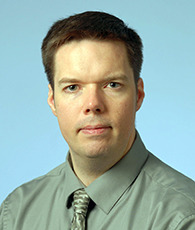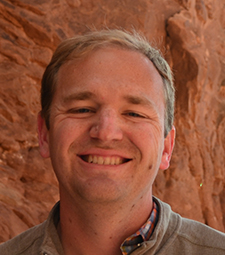

I want to thank everyone who was involved in the recent AAPM Annual Meeting in Denver. The entire week was a great success and Denver was a fantastic venue for our meeting. As usual, there were many sessions that dealt with imaging accreditation issues, including sessions on Implementing the changes to the ACR MRI program, CT Dose Optimization and Protocol Review, which included a fantastic summary by Andrea Browne from the Joint Commission on their most commonly scored standards, and significant discussion on the new ACR Digital Mammography QC manual. Hopefully many of these presentations will find their way into the Virtual Library on the AAPM website so that members who were unable to attend the meeting can learn from these valuable presentations.
While there were many great presentations at the Annual Meeting, I want to focus specifically on some of the updates from Dr. Kish Chakrabarti, the head physicist at the FDA who is in charge of the Certificate Extension program for Digital Breast Tomosynthesis systems. Dr. Chakrabarti's presentation focused on many of the issues that the FDA is looking at regarding Tomosynthesis systems and some common pitfalls to be aware of when submitting reports.
There are currently five FDA approved Tomosynthesis systems in the United States: Hologic Selenia Dimensions, GE Senoclaire, GE Pristina, Fuji Aspire, and the Siemens Inspiration. The main thing that the FDA reviews is that the physicist follows all the tests listed in the manufacturer's QC manual and provides sufficient data to indicate a properly functioning system. Therefore, it is the physicist's responsibility to understand each system's QC manual, perform the tests according to that specific manual, and provide a report showing successful completion of all the tests.
One of my main takeaways from the presentation is that the FDA is looking very closely at the reported mean glandular dose from the system and comparing that to the physicist's reported dose. When there is a discrepancy of more than 20%, the FDA will not grant the certificate extension until the physicist can address the reason for the discrepancy. Often, there are significant differences in the measurement of Half Value Layer (HVL) between the service engineer's calibration data and the physicist's measurements. Solid state detectors generally have a stated HVL accuracy of +10% and differences between the service engineer's test equipment and the physicist's test equipment can lead to differences in reported dose. Therefore, it may be necessary to verify the accuracy of your test equipment with an ion chamber and aluminum filters.
Additionally, the FDA will not accept systems where the mean glandular dose is outside the normal operating range of the system. For the Hologic Selenia Dimensions systems, the FDA expects the Tomosynthesis dose to be approximately 140 mrad. Facilities who submit physics reports and phantom images where the dose is significantly below this level may not be granted a certificate. If you encounter a system where the Selenia Dimensions 3D dose has been set below 120 mrad, you should include an explanation as to why the dose has been set at this level and document that the lead interpreting radiologist approves of the image quality at this dose.
The submission process also includes an image of the ACR image quality phantom for review. This can be done with a printed film of the best slice or submission of the phantom on CD or DVD. The FDA will make every effort to open CD's that have been sent, but it is highly recommended that you verify that the CD can be opened using ClearCanvas or K-Pacs. Occasionally, when the entire stack of tomosynthesis images is included on a CD, viewers are unable to scroll through the entire image set and the FDA will have to ask the facility to resend just the single best image.
Finally, the Dr. Chakrabarti clarified that the physicist training requirements for Tomosynthesis systems has been updated to reflect the idea that Tomosynthesis is a new modality, rather than each manufacturer's system being the new modality. This change means that you must have eight hours of documented training in tomosynthesis to be qualified to test any of the approved systems. You are no longer required to document training specific to each manufacturer's system. Of course, it is highly recommended that you be familiar with each system's unique QC manual and testing requirements before you perform your equipment evaluation.
We have noticed that you have an ad blocker enabled which restricts ads served on this site.
Please disable it to continue reading AAPM Newsletter